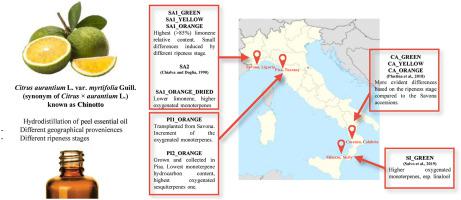当前位置:
X-MOL 学术
›
Biochem. Syst. Ecol.
›
论文详情
Our official English website, www.x-mol.net, welcomes your
feedback! (Note: you will need to create a separate account there.)
The influence of ripeness stage and growth area on myrtle-leaved orange (chinotto) peel essential oil composition
Biochemical Systematics and Ecology ( IF 1.4 ) Pub Date : 2020-08-01 , DOI: 10.1016/j.bse.2020.104071 Guido Flamini , Laura Pistelli , Roberta Ascrizzi , Luisa Pistelli , Angela Zinnai
Biochemical Systematics and Ecology ( IF 1.4 ) Pub Date : 2020-08-01 , DOI: 10.1016/j.bse.2020.104071 Guido Flamini , Laura Pistelli , Roberta Ascrizzi , Luisa Pistelli , Angela Zinnai

|
Abstract Myrtle-leaved orange, or chinotto, is a Chinese lesser-known citrus, nowadays cultivated in all the Mediterranean area of Italy. Its fruits are traditionally used in the confectionary and beverage industries: the former mainly uses the unripe fruits, while the juice of the ripe ones is the core ingredient of the well-known Italian soft drink “Chinotto”. In the present work, the compositions of several accessions of chinotto fruit peel essential oils (EOs) have been analysed by GC-MS: in particular, i) fresh specimens from Savona (Liguria, Italy) at different ripening stages, as well as a dried ripe one; ii) two accessions from Pisa (Tuscany, Italy), of which one native and one transplanted from Savona. A comparison of the analysed samples with literature reported EO compositions has been performed by means of multivariate statistical analysis. The aim was to assess the influence of both the ripening stage and the geographical area of collection on the EO, assessing which factor influenced it the most. The ripening stage influence on the EO composition was found to be less significant compared to the geographical area of growth of the specimens. The statistical analyses, indeed, evidenced a proximity in the compositions obtained from the different ripening stages, whereas greater differences were evidenced for samples at the same ripening phase, but coming from different regions.
更新日期:2020-08-01











































 京公网安备 11010802027423号
京公网安备 11010802027423号